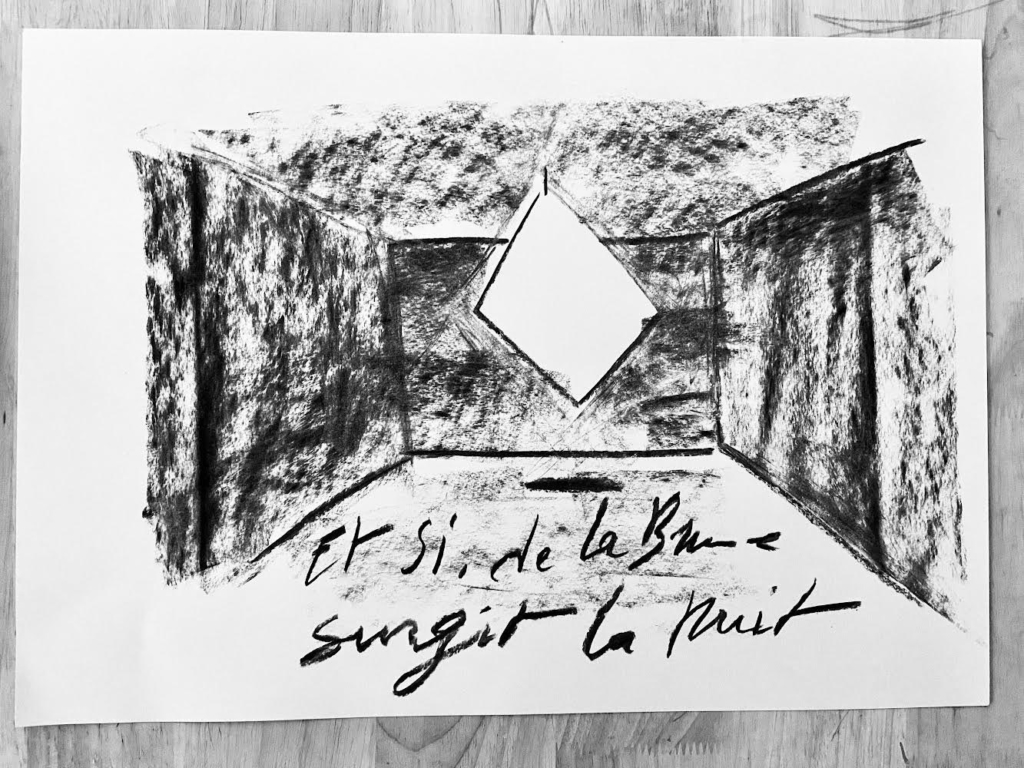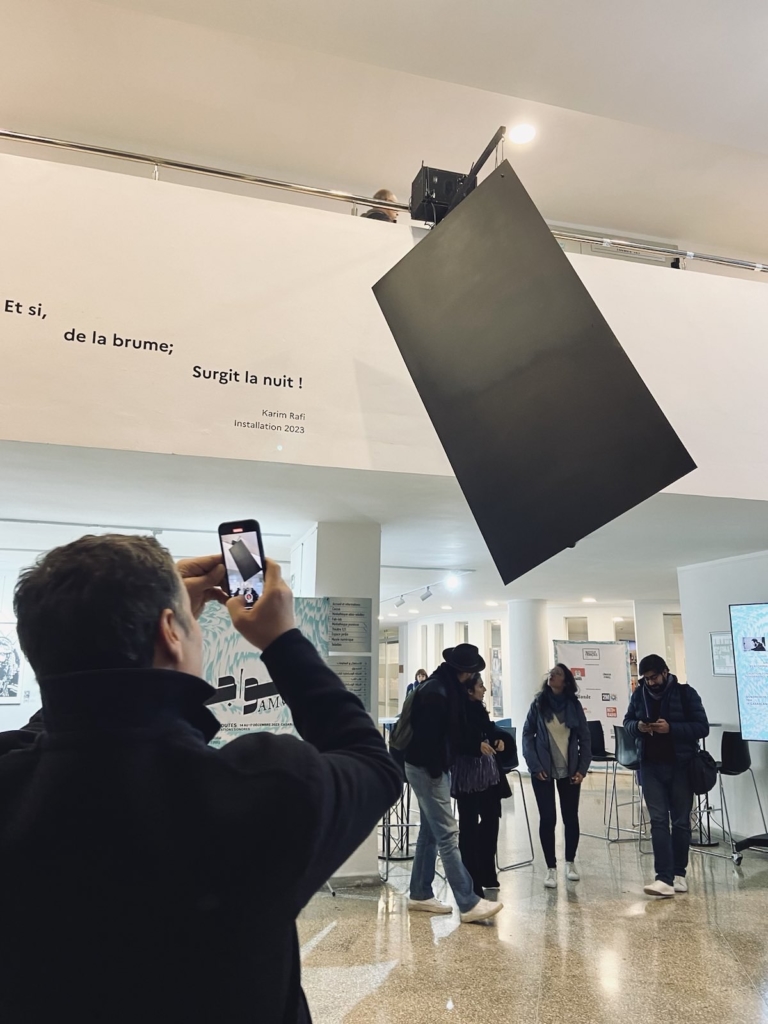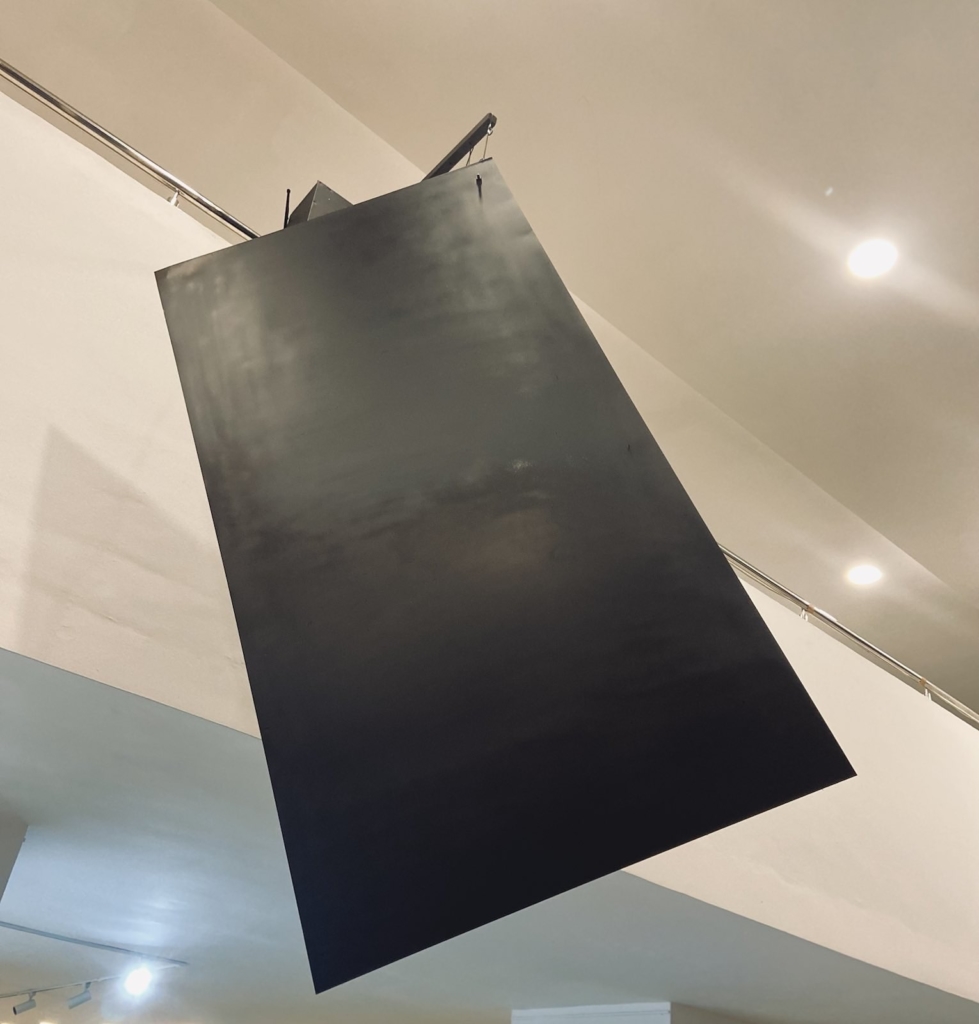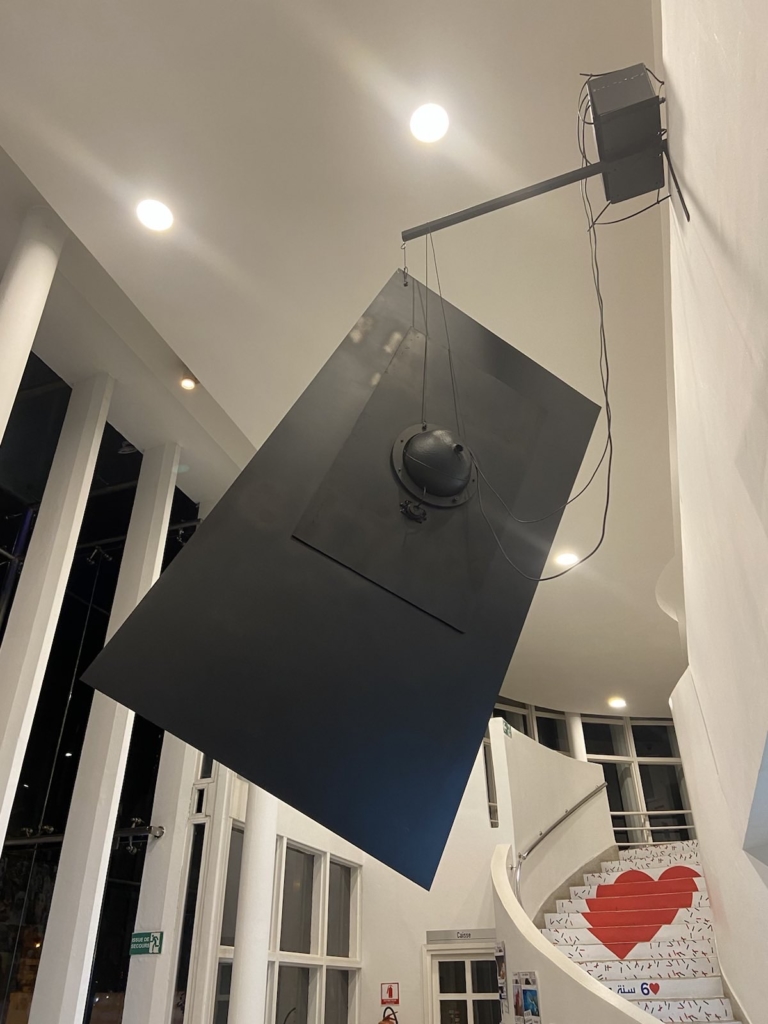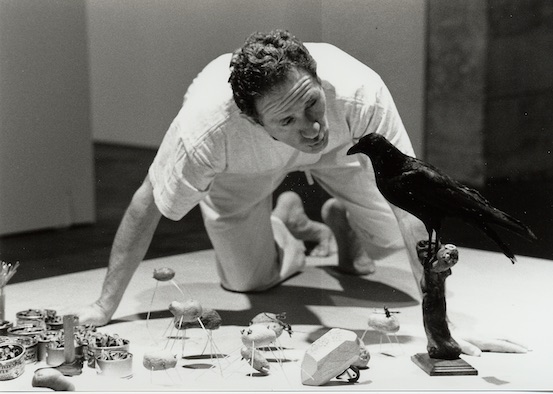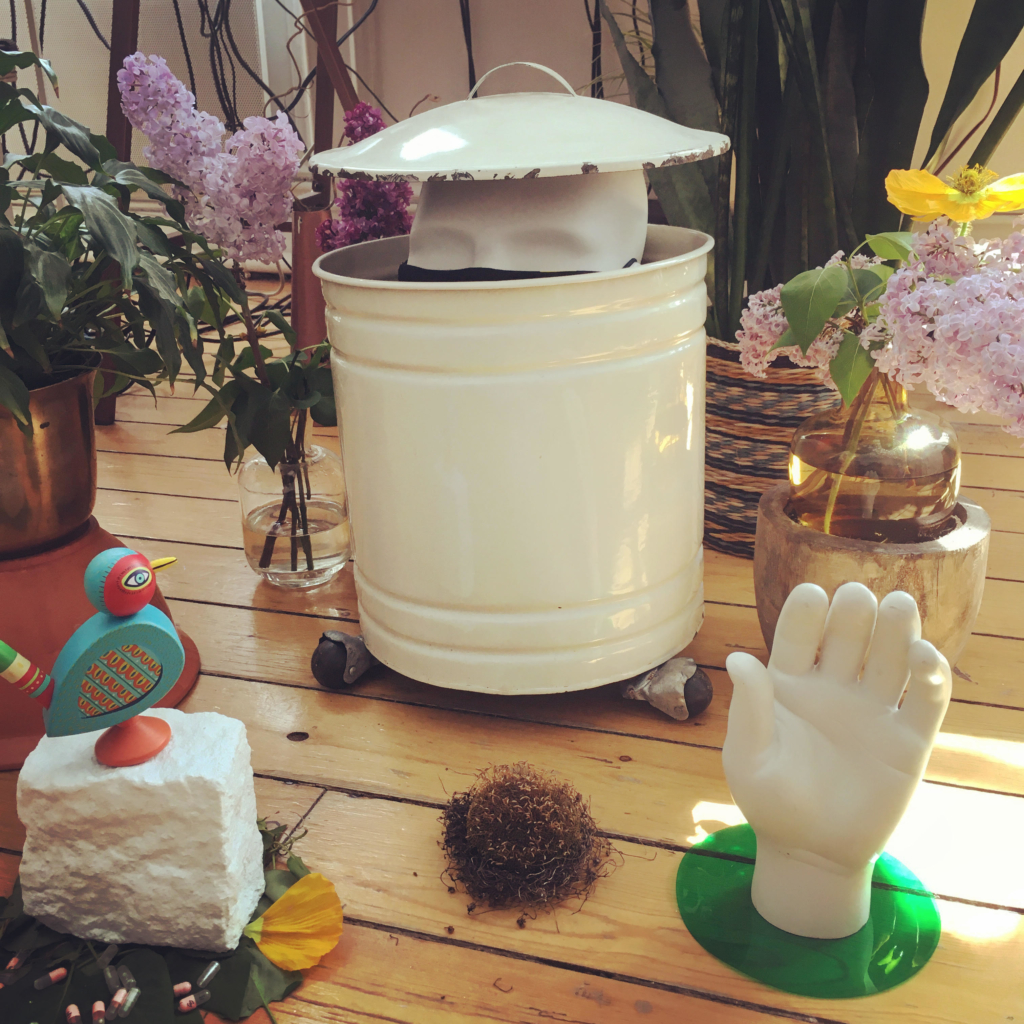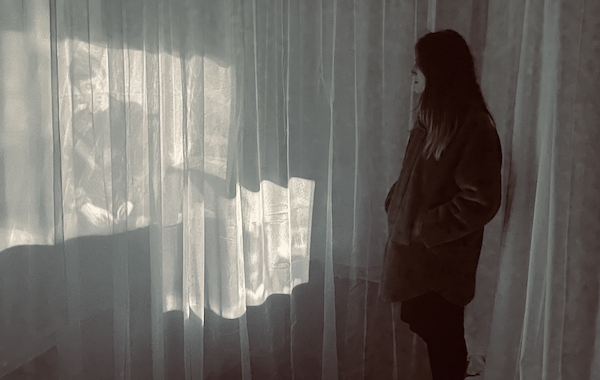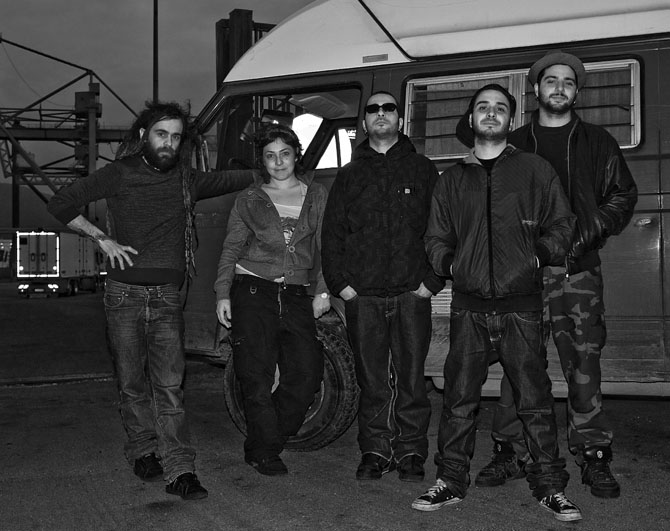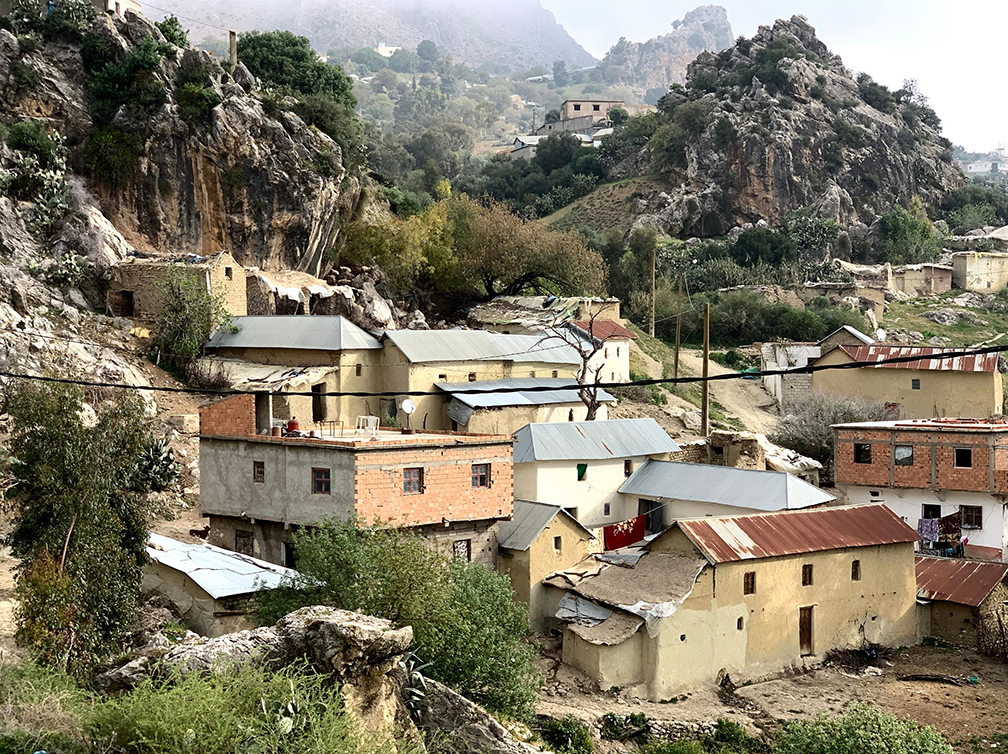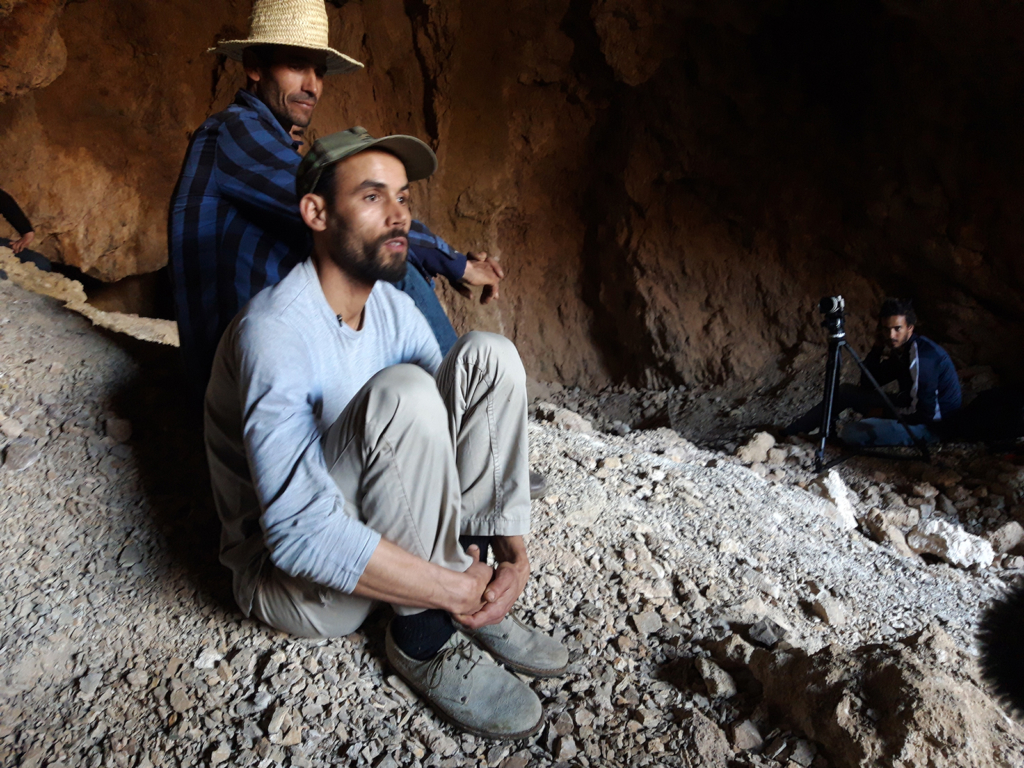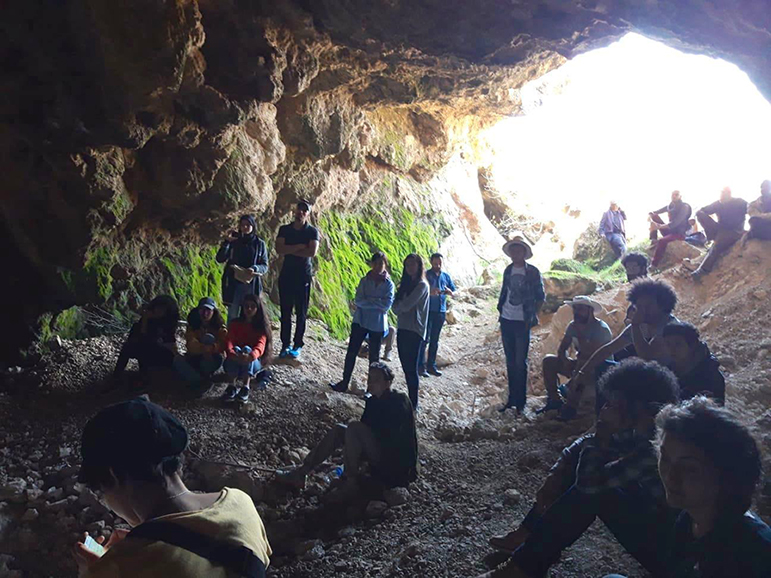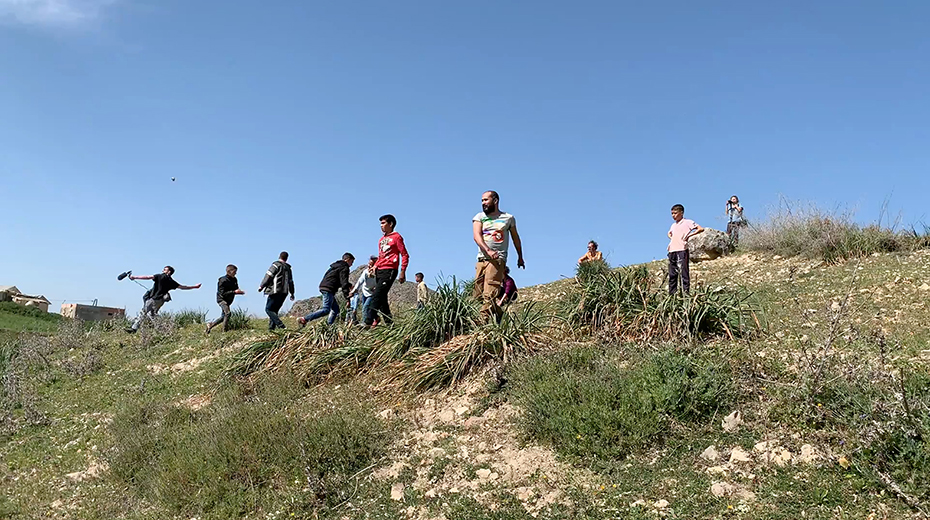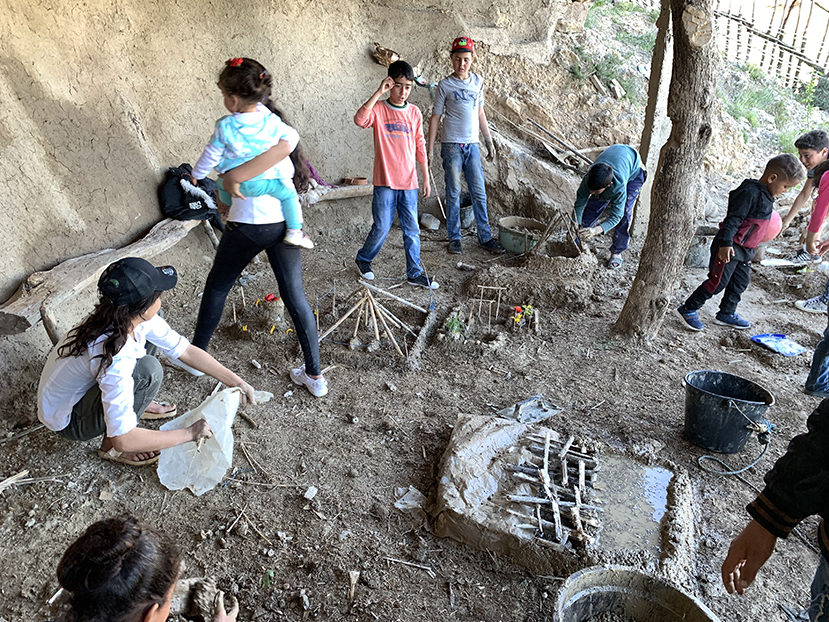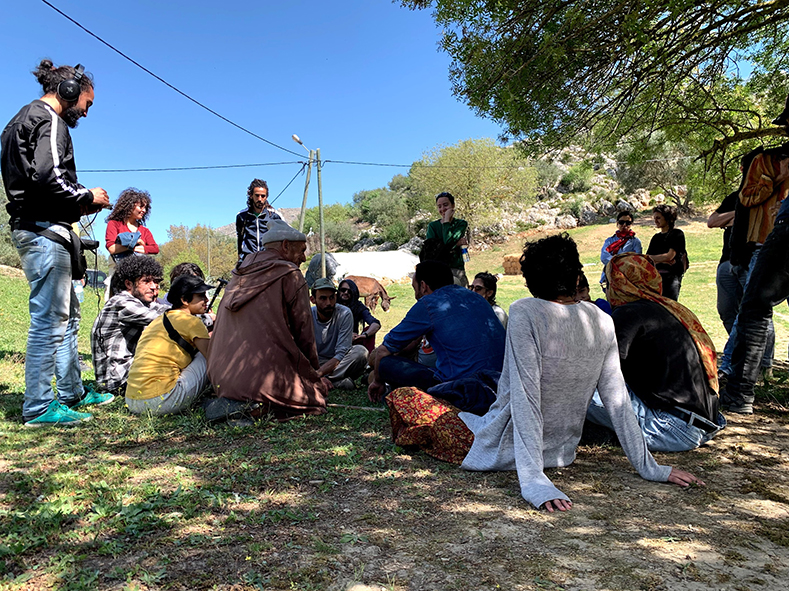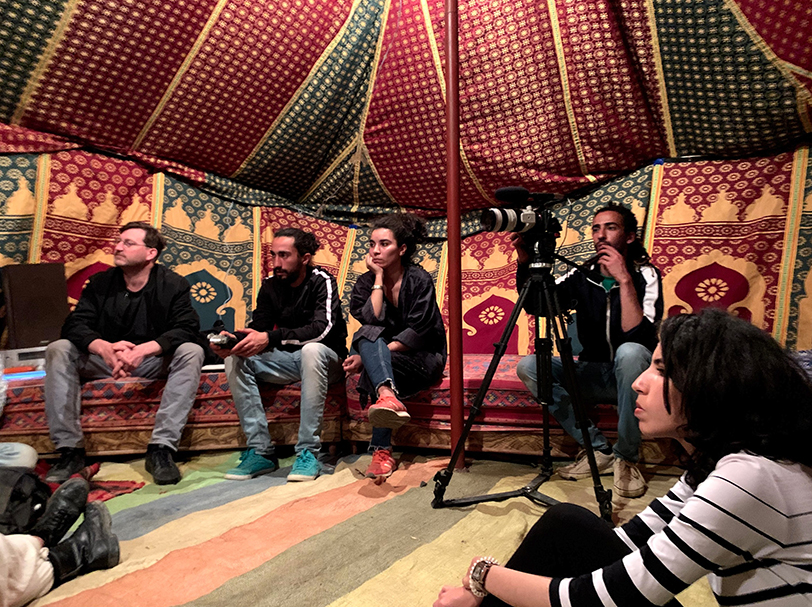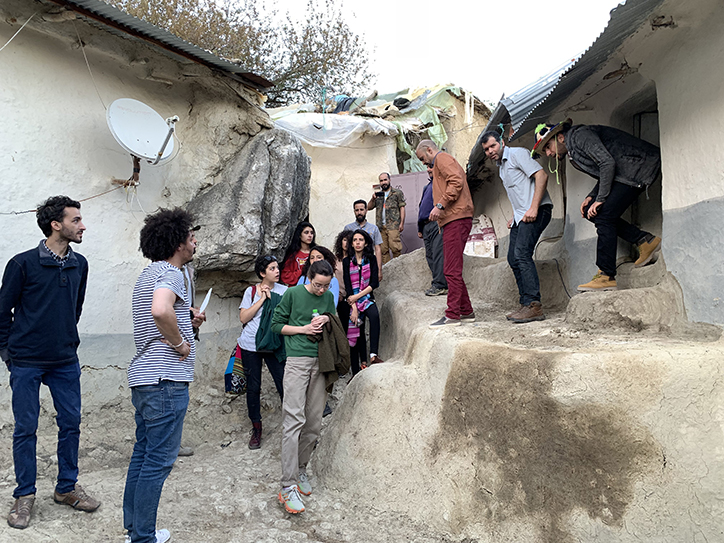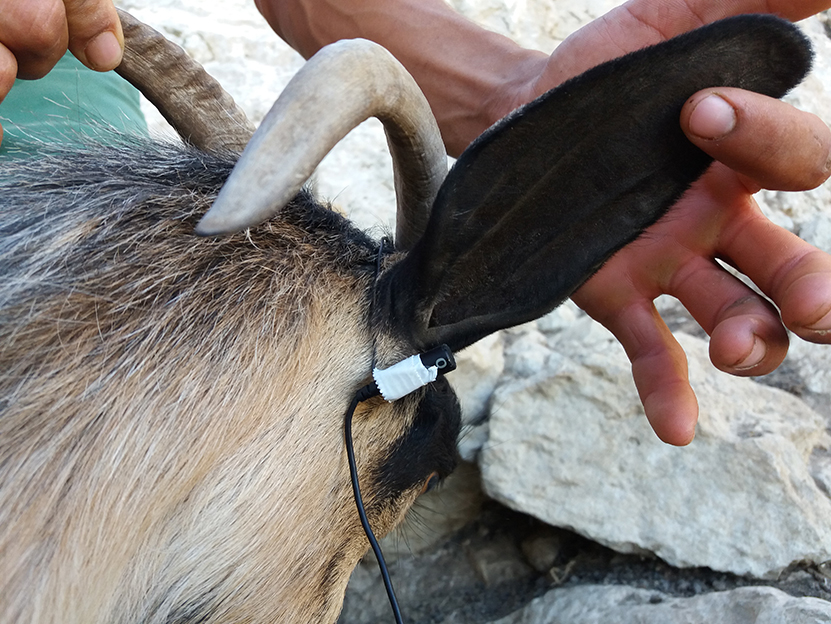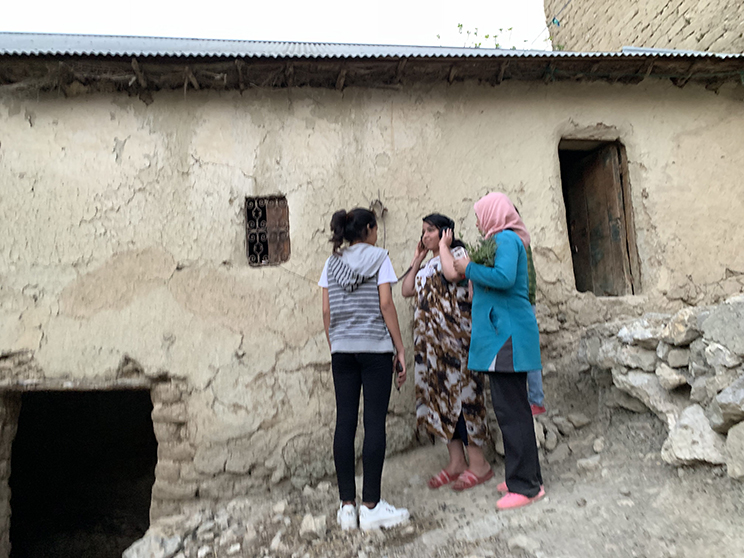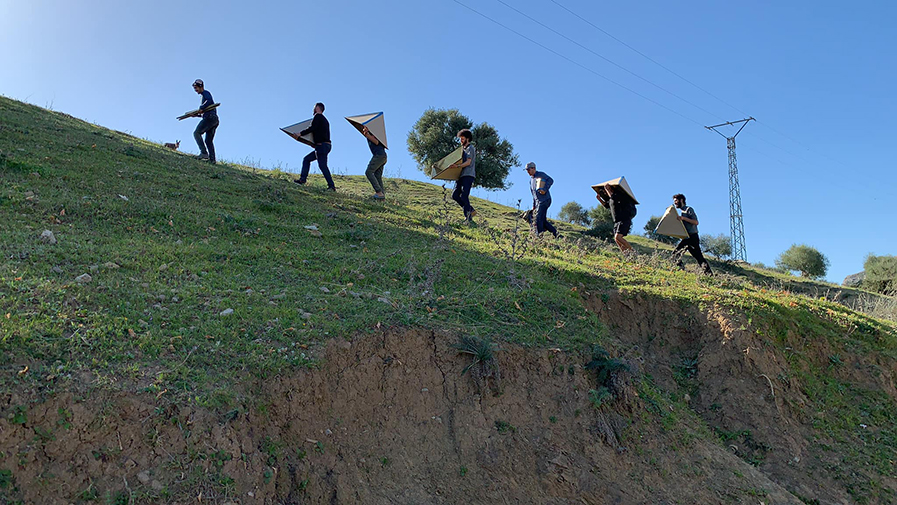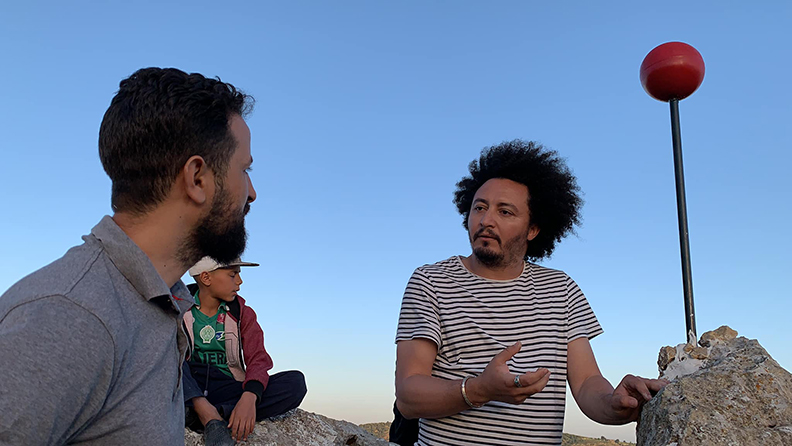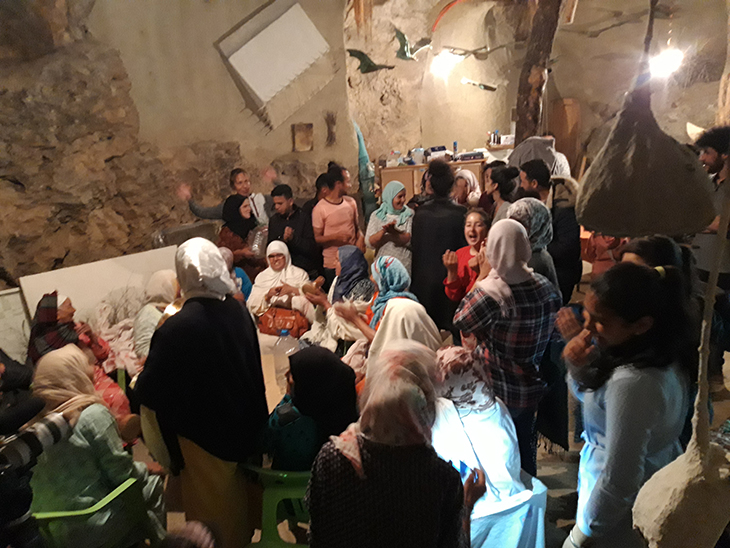Une traversée de l’univers de L’appartement 22
Une ballade dans les archives de la R22 art radio, à l’occasion du 22e anniversaire de L’apparteemnt 22. 22 ans déjà !
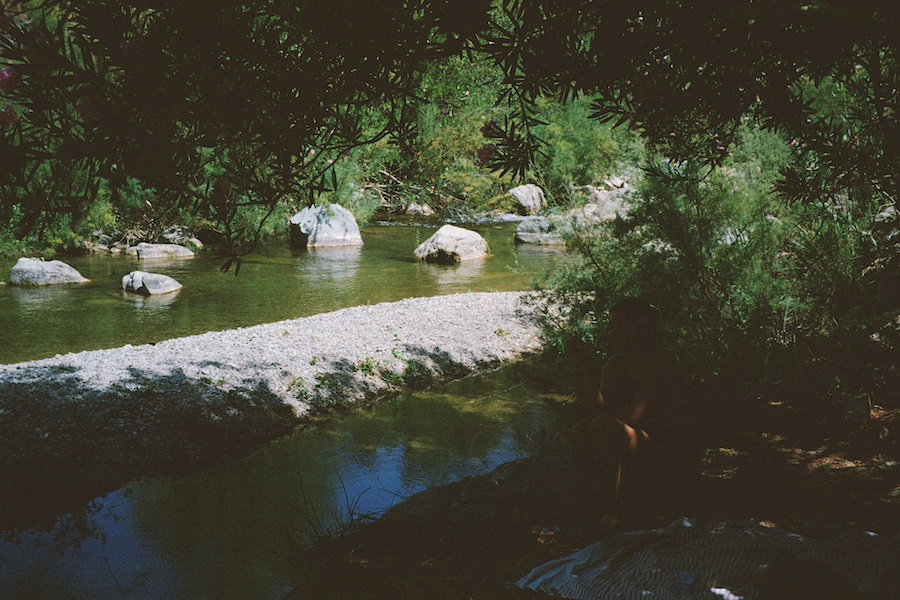
Emission réalisée par Paul Kermarec, été 2024
Ce programme de radio est pensé comme une balade de 50 minutes. Une promenade à travers les archives sonores de L’appartement 22, mais aussi une balade à travers le monde : du Maroc à la Turquie, en passant par l’aéroport de Madrid, les montagnes du Rif, le métro de Paris, les plages du Portugal et les rues d’Istanbul… Ce voyage est ponctué par les voix et les musiques de Touria Hadroui et d’Aga Sissao. On peut y entendre parler des artistes, comme Sofia Aguiar en conversation avec Sanaa Zaghoud, Moustapha Azeroual ou encore Syl. Paris. Kouton.
Cette balade commence à la gare de Rabat Ville avec un enregistrement des informations de route, puis nous nous rendons à Paris avec une interview d’Abdellah Karroum sur France Inter, pour parler de l’exposition « Notre Monde Brûle » au Palais de Tokyo en 2020. Si l’on continue, on peut entendre une conversation sur les plantes entre Christian Berg et Gabriella Ciancimino. Avant d’arriver, par avion, au Portugal, pour entendre Sanaa discuter avec Sofia Aguiar sur un fond de fado. Ensuite, nous embarquons pour la Turquie, pour l’annonce de la biennale d’Istanbul et l’animation de ses rues. On pourra entendre un chat et Kaya Marie jouer quelques notes de piano, avant d’écouter un avion se poser à Madrid et les musiciens du métro de Paris. Tout cela nous amène à une discussion entre Abdellah et Mustapha Azeroual, une sorte d’audio guide pour l’exposition de l’artiste à l’A22, « Fragment de Soleil », qui avait eu lieu en 2022. Nous resterons à Rabat avec un enregistrement de l’Avenue Mohamed V, puis une nouvelle discussion entre Sanaa et l’artiste Syl. Paris. Kouton. Nous finirons cette balade avec un dernier extrait d’une interview d’Abdellah Karroum. Bon voyage !
Credits et Merci à: Abdou, Anne, anonymes, Bernard, Emma, Fadma, Martine, Mustapha, Ninar Esber, Pascal, Sanaa, Solene, Soukaina, Taha, Tomas, Yassine,

